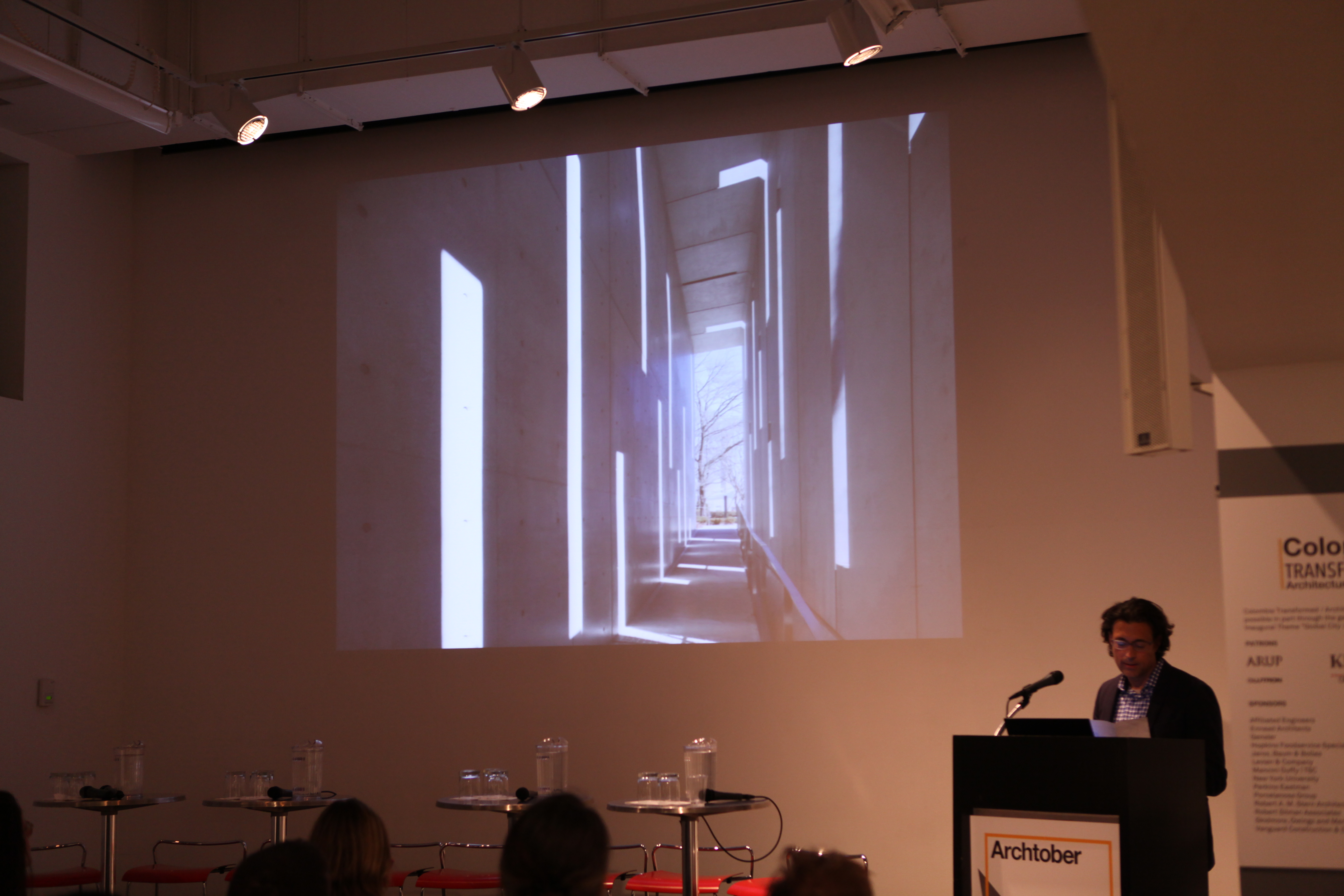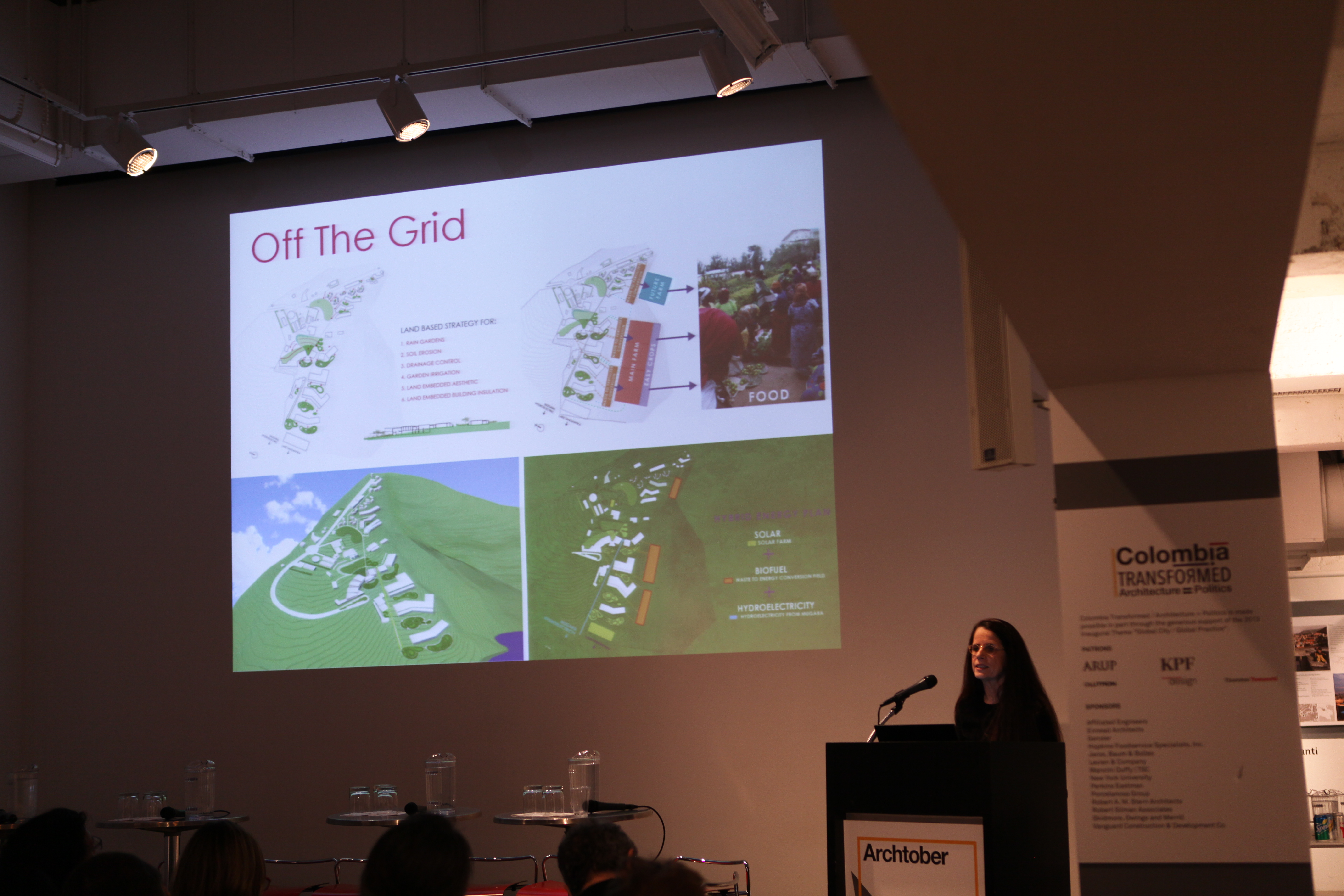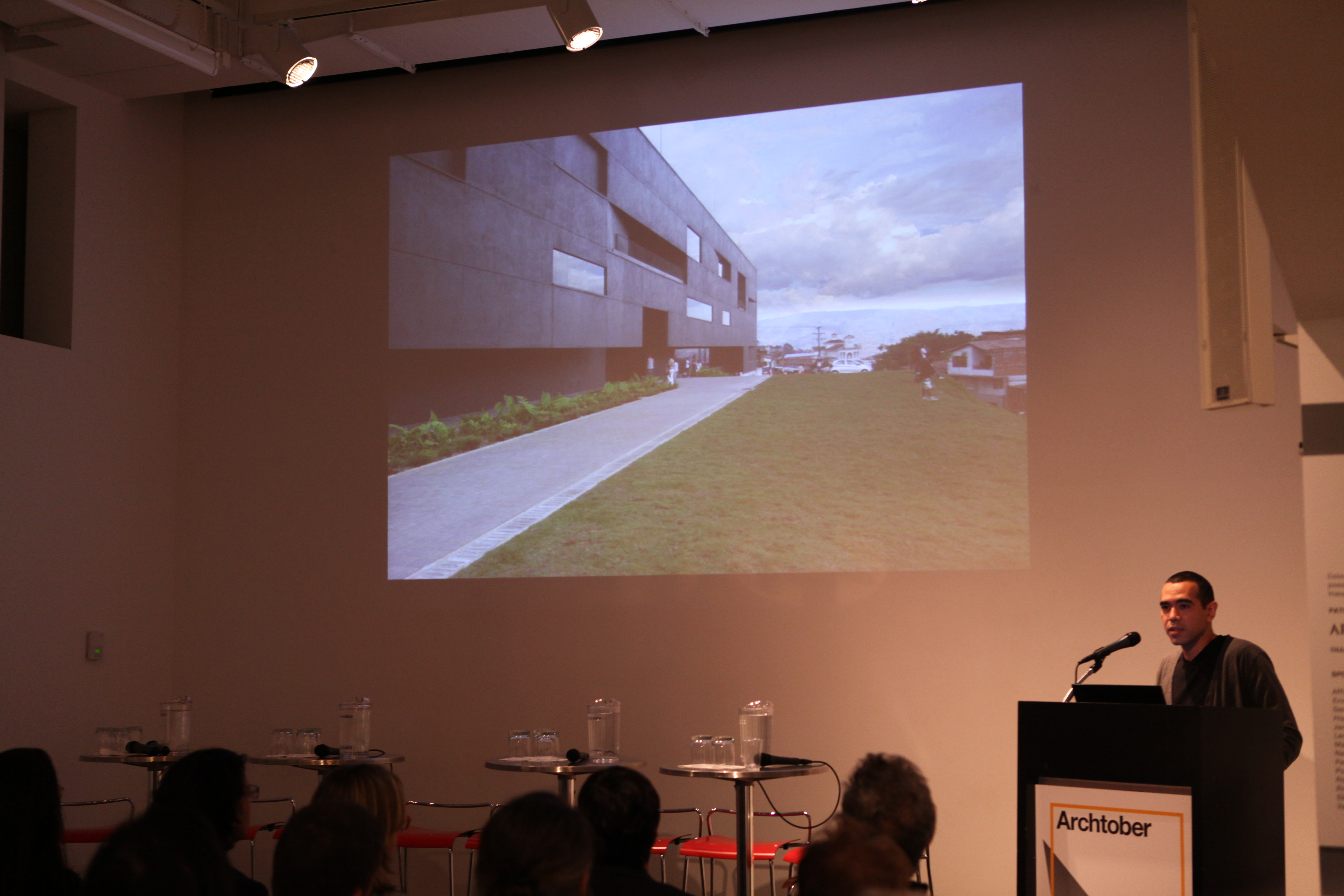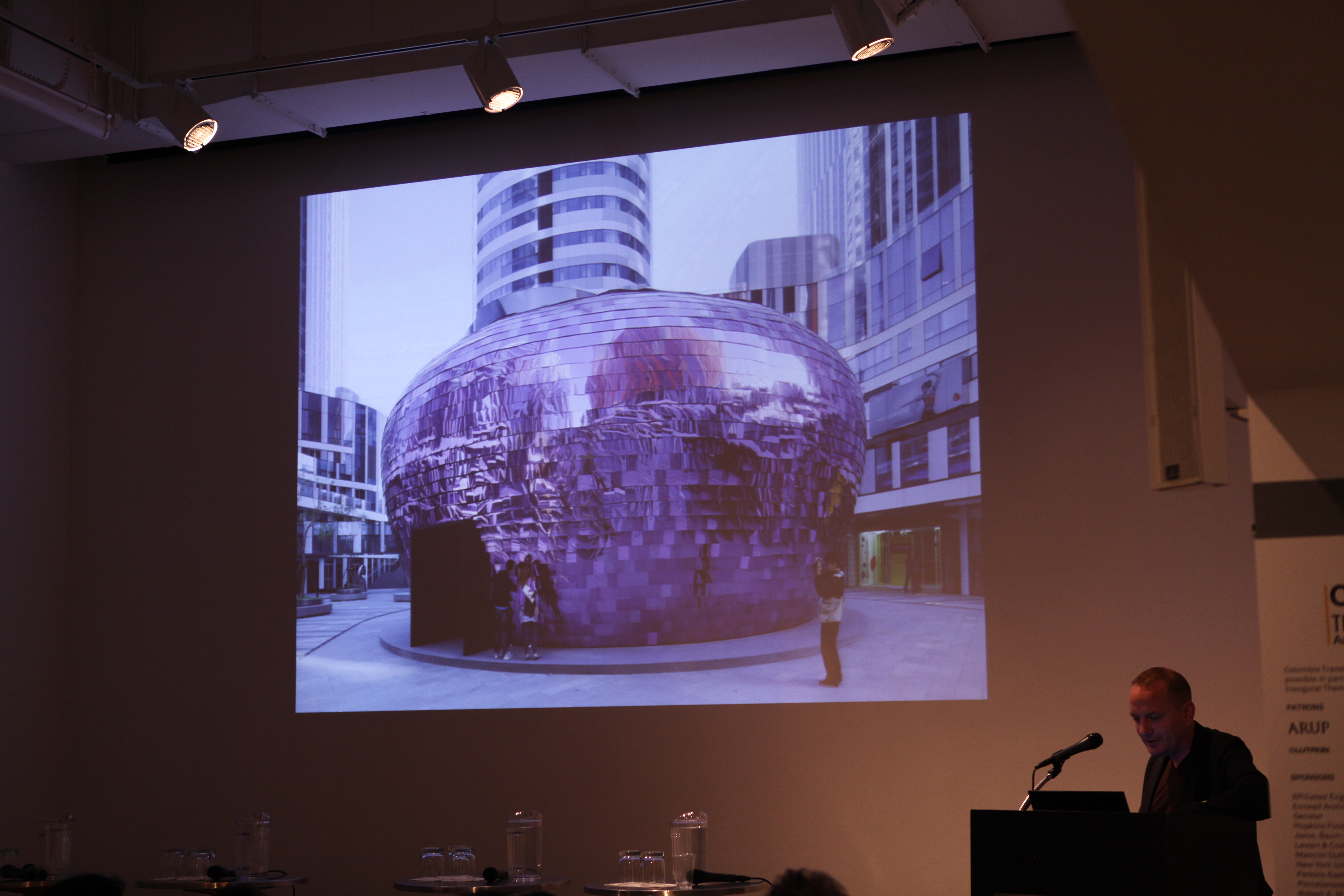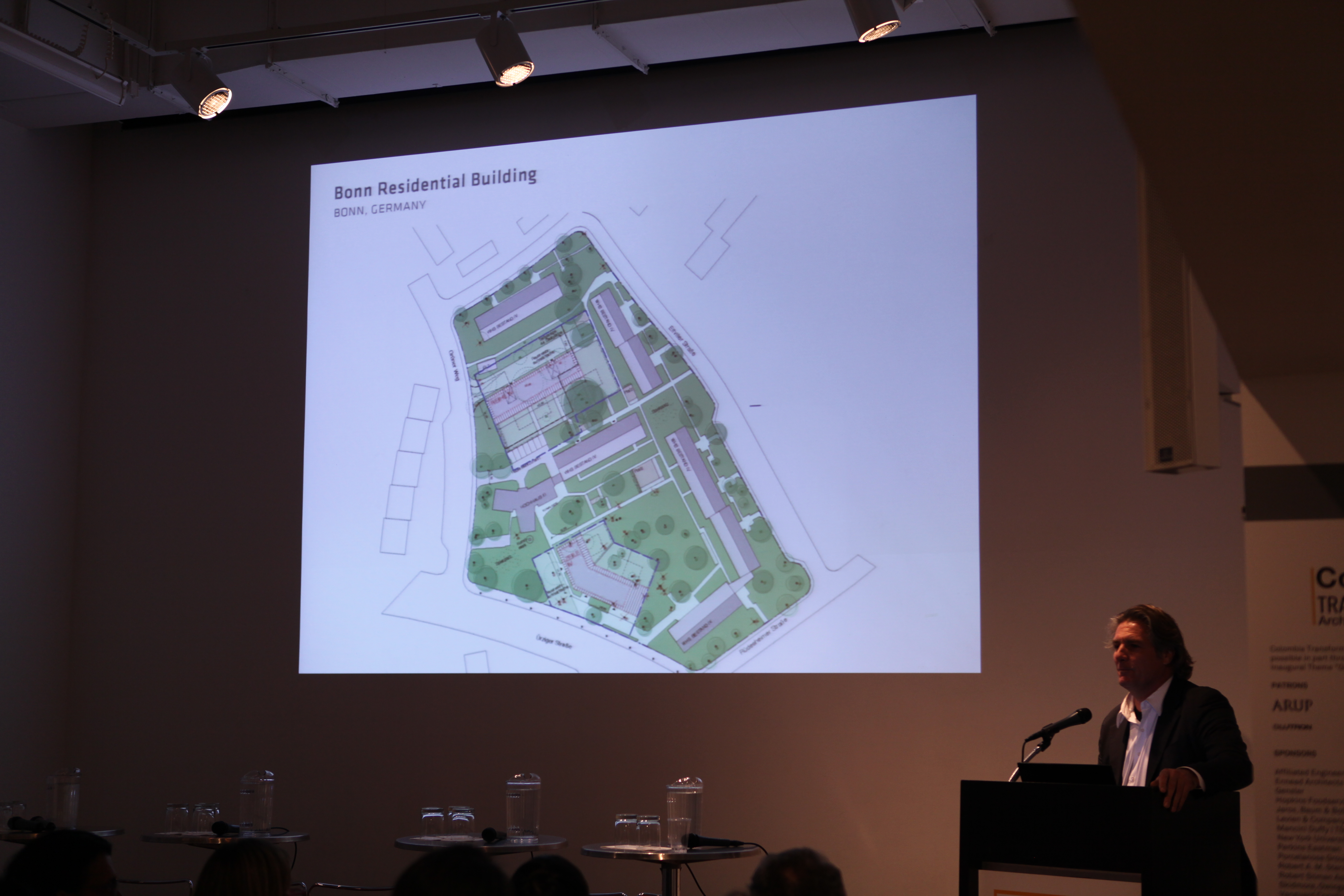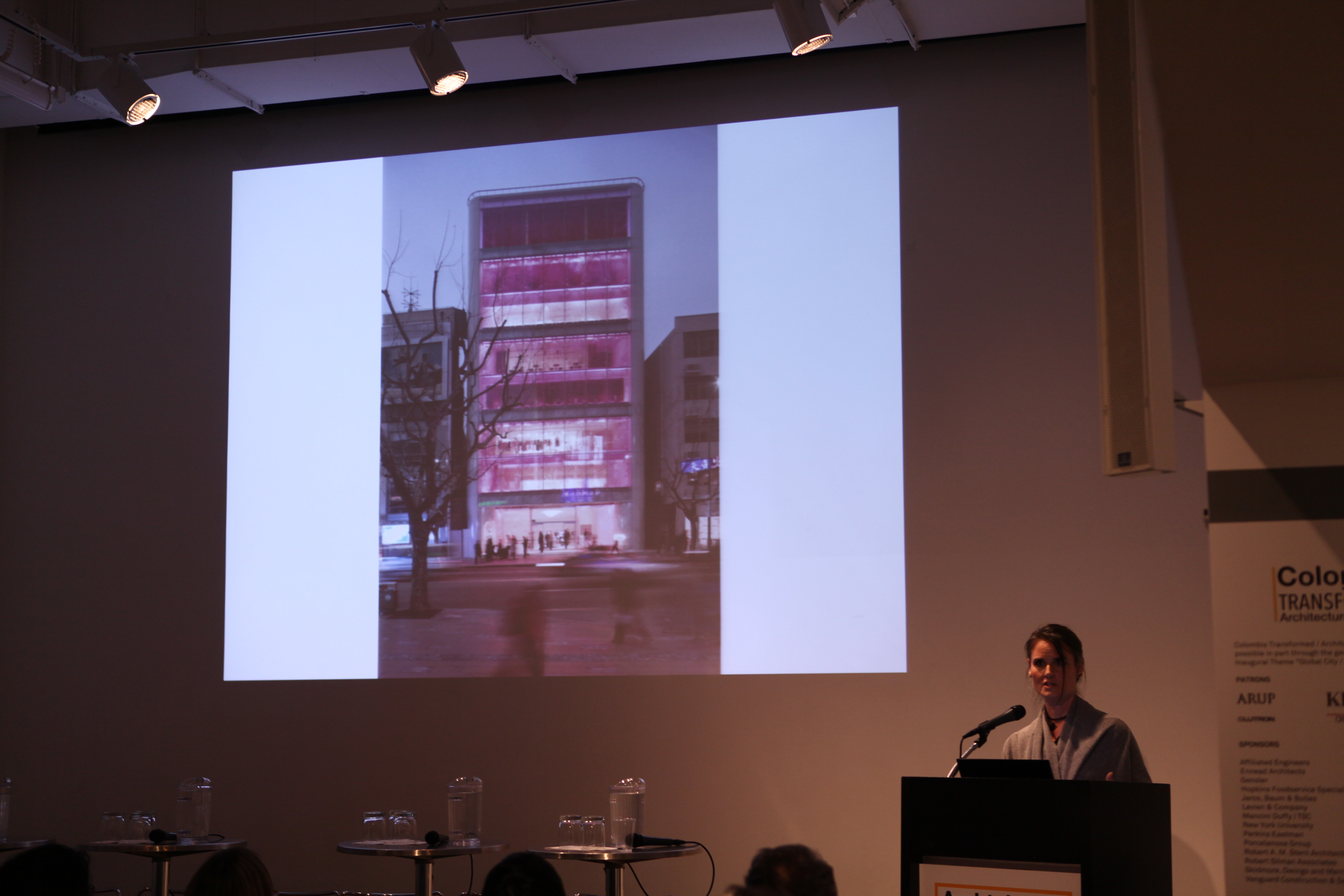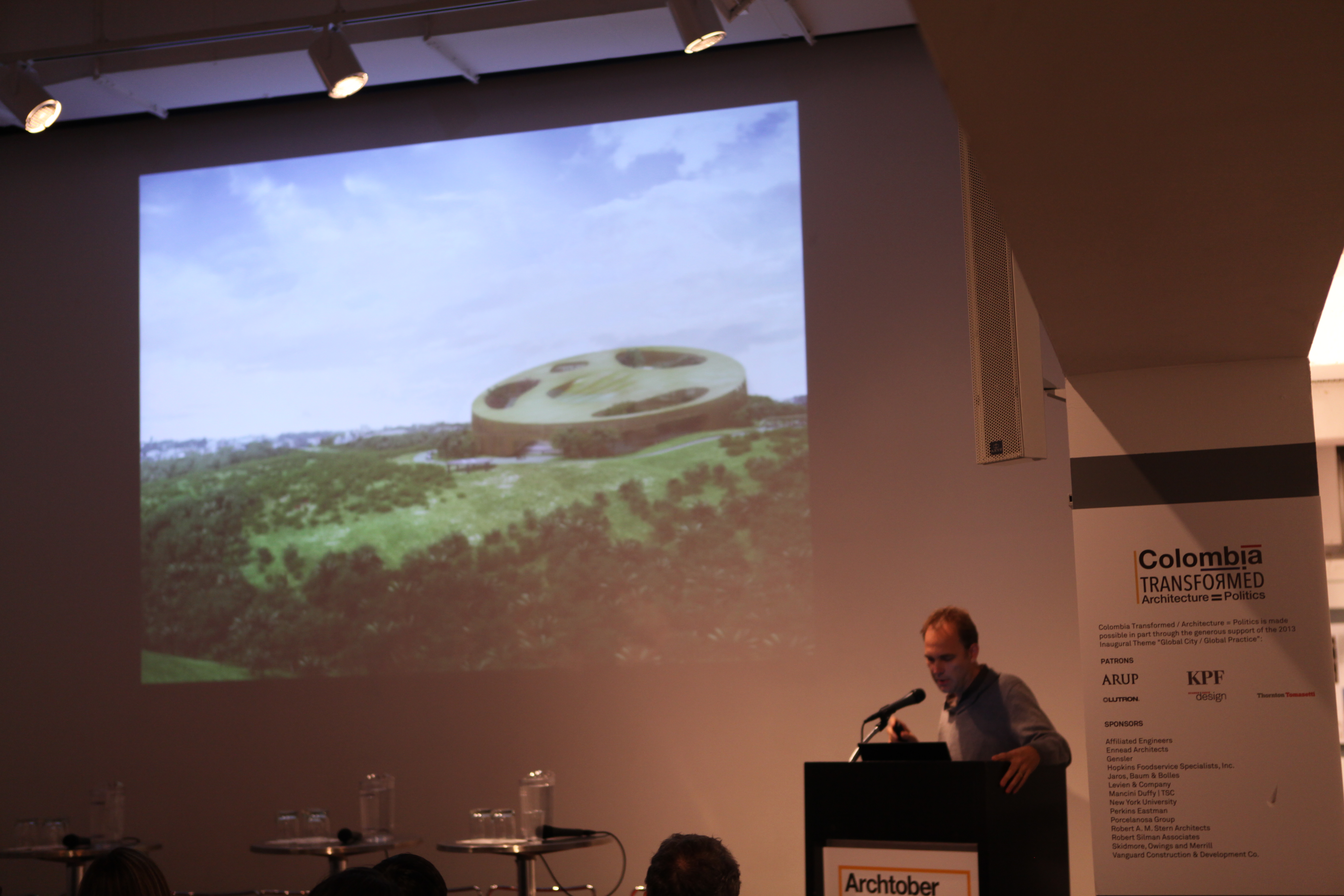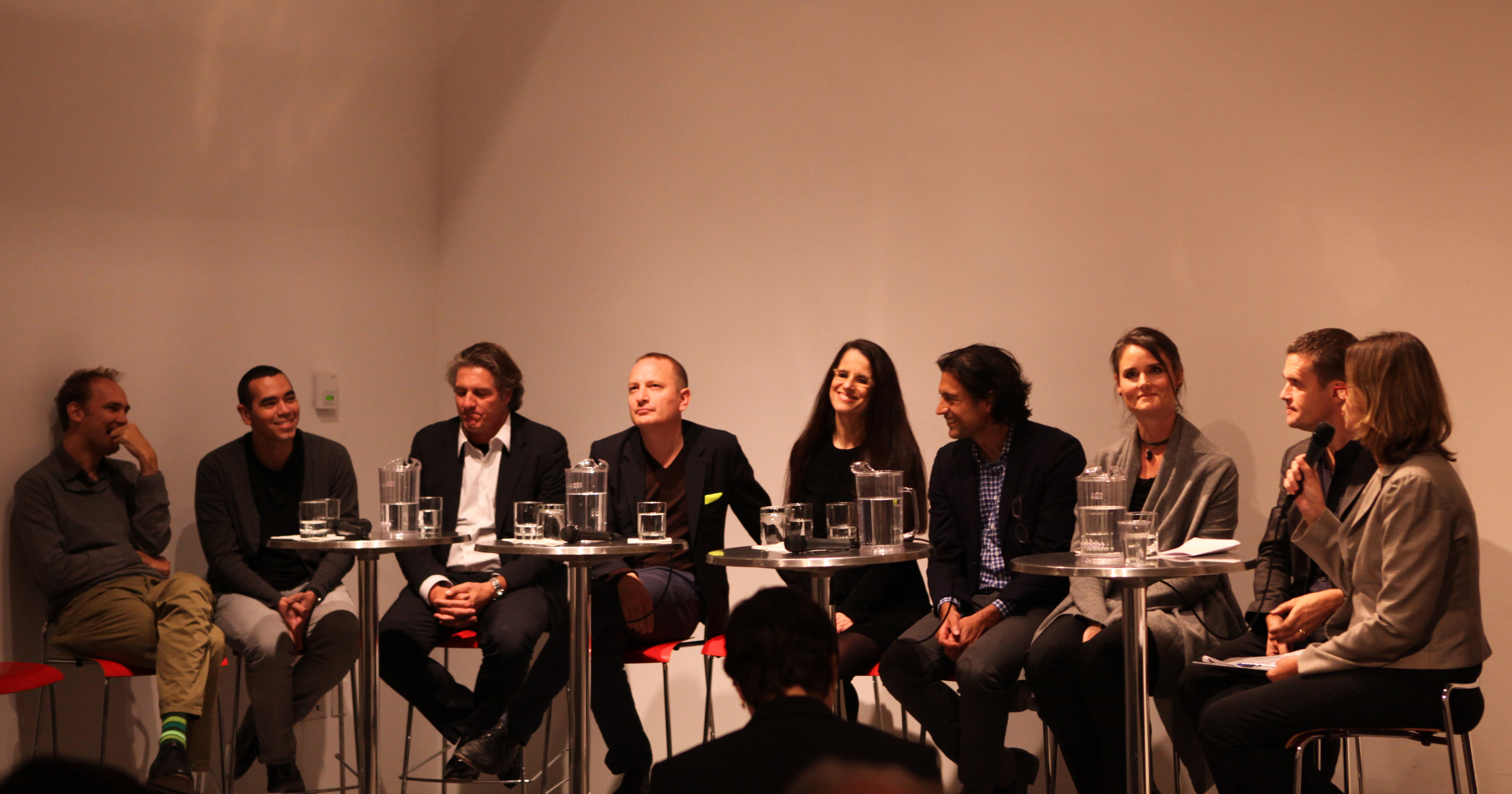by Greta Hansen
Nine New York-based architects got together at the Center for Architecture to talk about the intersection of their small practices with work that takes them around the globe. Often it’s their smaller size that allows them to work more flexibly within unexpected constraints and conditions. From conversations about how small firms can market themselves globally, to discussions about sourcing labor and materials, each experience was a unique take on navigating uncharted territories.
When Orlando Garcia of G Atelier got his first project abroad it was also a return to his home country. The economic crash in 2009 gave him the time to design a house for his cousin in Medellín, Colombia for no fee. But because the project led to others in the city, G Atelier has been able to run a Colombia-centric design practice from its New York base.
David Piscuskas, FAIA, related a converse situation. His firm, 1100 Architect, opened an office in Germany without a project and without a business plan. Choosing Frankfurt over Berlin “because it seemed easier,” they set up shop and established themselves as a residential design firm with a different bent than most of the cookie-cutter German architects. As a New York architect in Frankfurt, 1100 has become a kind of brand for a different sort of architecture. And you can’t beat German construction standards.
Unless, of course, you’re in Japan. Sunil Bald of Studio SUMO described Japan’s high standards: “There is an incredible pride in the construction … We went to look at concrete mockups and they all looked great to us… Later, we used this as pads for electrical equipment.” But Bald also described the relatively intransigent attitude in Japan towards changes to already approved designs and materials.
Florian Idenburg, Int’l. Assoc. AIA, of SO-IL called this Japanese trait “the inability to improvise,” and named Korea as the best of two worlds – between China’s manufacturing resources and Japan’s construction quality. “But the great thing about China,” said Idenburg, whose firm designed an installation near the Bird’s Nest in Beijing, “is you can build a building in six weeks.” At this point, it sounded like choosing the location for a project could be a kind of shopping experience suited to the firm. If only small firms could be so choosy. SO-IL’s projects, many of them competition entries, are often awarded a second prize because public clients are more likely to have a local team finish out the project.
For SO-IL’s work on the Kukje Art Center in Seoul, a chain-link mesh was traced it to its source: a small backyard in the countryside in China where they produced the entire cladding for the “shrink-wrapped chain mail” building. SO-IL’s flexibility allowed them to work with the fabricators on site. (The project won an Unbuilt Honor Award in the 2011 AIANY Design Awards.)
Hayes Slade, AIA, of Slade Architecture also spoke of the plus side of working in a foreign culture. Slade’s project for Mattel’s Barbie Shanghai benefited from less expensive Chinese production and featured an interior of molded polycarbonate and custom-designed furniture. A fritted glass storefront features Barbie iconography with LED strips. Slade believes that Mattel chose a small firm over a large one to avoid having an established name overshadow its brand. (This project won an Interiors Merit Award in the 2012 AIANY Design Awards.)
One of the more dramatic anecdotes was told by Louise Braverman, FAIA, whose eponymous firm designed a number of buildings in Burundi. According to Braverman, “There are no architects in Burundi.” Because of this, the firm reorganized the typical design process: “We literally made a set of 56 instructions in Rhino,” and trained a labor force to create and build concrete blocks.
WORKac, presented by Principal Dan Wood, AIA, is also working on a project in Africa for which labor and materials must be sourced unconventionally. The African Summit’s 2014 assembly hall in Gabon will rely on imported labor and materials. Along with another large project, the development of an island in St. Petersburg, Russia, WORKac’s international work allowed the office to expand from 12 to 40 staffers, just at the boundary of what is commonly considered to be a small firm. From the beginning, WORKac knew how to market itself. Even when working from an apartment, Wood said, “we decided to act bigger than we were.”
Moderator Cathleen McGuigan, editor-in-chief of Architectural Record, was in agreement with the other architects that “small firms have nimbleness on their side.” This nimbleness, so helpful in unknown environments, is also fleeting. Small firms, especially when working on large projects on the other side of the world, are always also engaged in a balancing act with their size.
Greta Hansen is a New York-based architectural designer and writer.
Event: Small Firms/Global Reach
Location: Center for Architecture, 10.21.13
Speakers: Sunil Bald, Founding Design Principal, Studio SUMO; Louise Braverman, FAIA, Principal, Louise Braverman Architect; Eric Bunge, AIA, Principal, nARCHITECTS; Orlando Garcia, Principal, G Atelier Architecture; Florian Idenburg, Int’l Assoc. AIA, Principal, SO-IL; Jill N. Lerner, FAIA, 2013 AIANY President; David Piscuskas, FAIA, Principal, 1100 Architect; James Slade, AIA, and Hayes Slade, AIA, Principals, Slade Architecture; Dan Wood, AIA, Principal, WORKac; Cathleen McGuigan, Editor-in-Chief, Architectural Record (moderator)
Organizers: Center for Architecture
Sponsors: Kramer Levin
